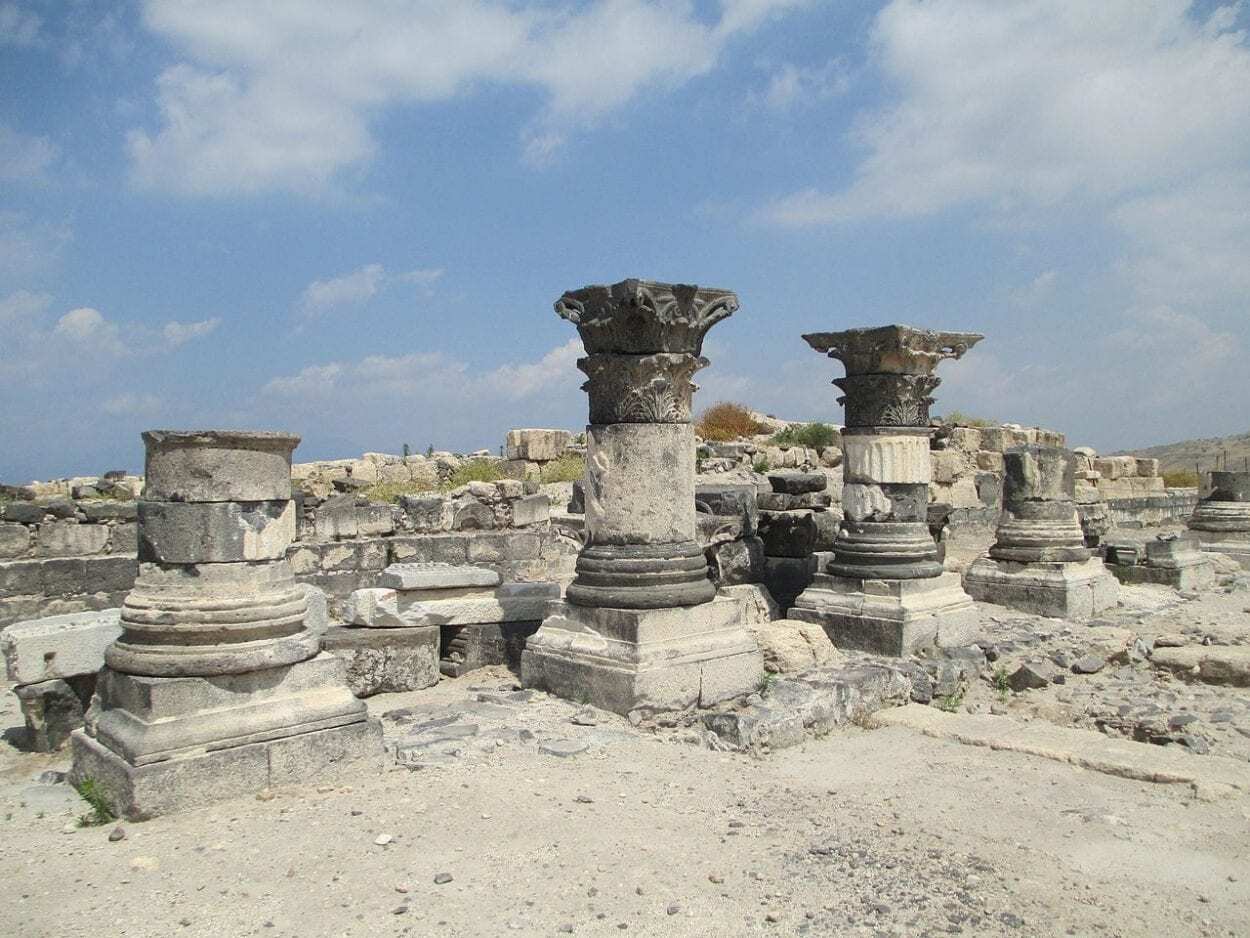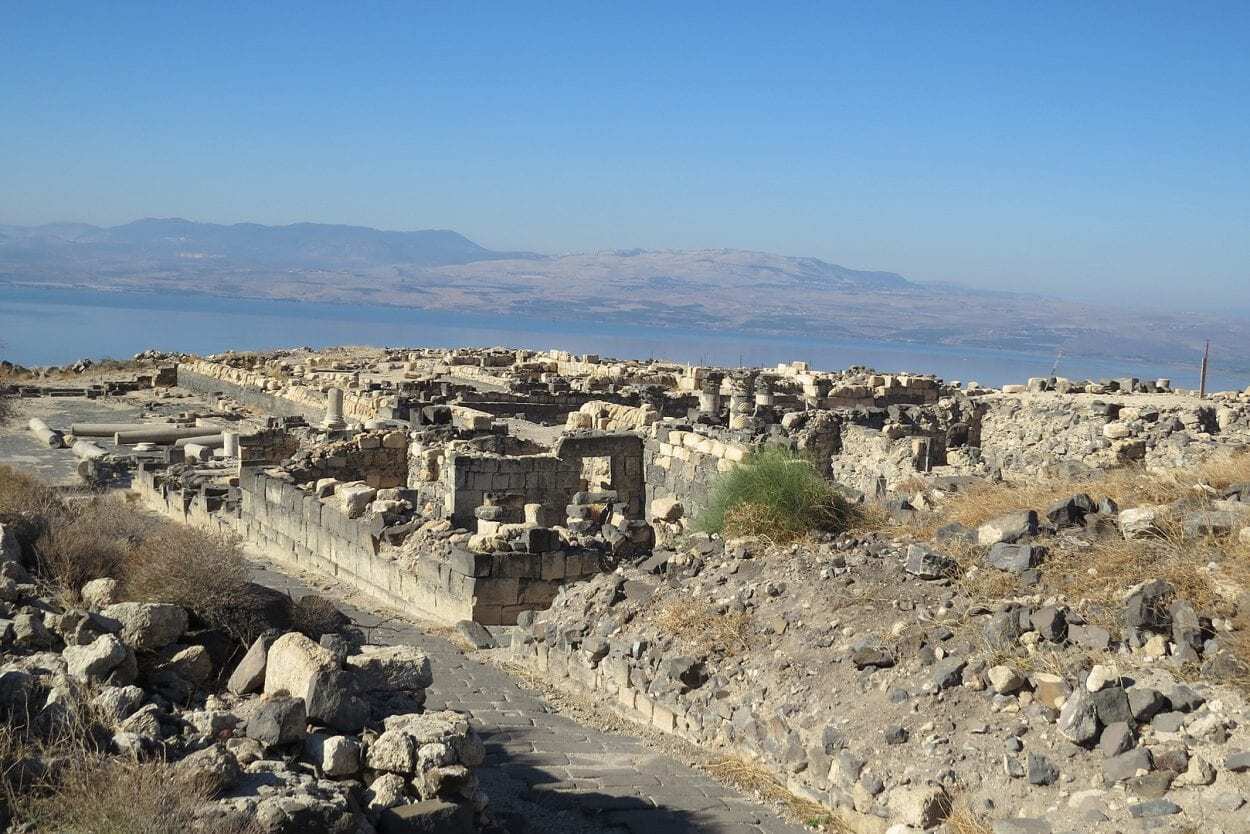Hippos, meaning “horse” is an ancient Greco-Roman city in the foothills beneath the Sussita Mountain, located near the present-day Kibbutz Ein Gev in the Northern District of Israel.
Although there is evidence of earlier settlement in situ, Hippos was established during the mid-3rd century AD as a colony, after the Seleucids sized control of territories previously controlled by the Ptolemies.
The Seleucids were a Hellenistic Empire that was founded by Nicator, one of the Diadochi rivals who fought for control over Alexander the Great’s Empire after his death, establishing the Seleucid Empire over territories Alexander had conquered in Asia.
The colony developed into a fortified polis (a city-state) called Antiochia Hippos (the latter name being a common name of Seleucid monarchs), which became a regional power controlling the surrounding valleys. Like contemporary Hellenistic polis states, Hippos contained a temple, central market and various public buildings surrounded by an imposing fortified wall.

By the Roman period, the Seleucid Empire came into conflict with the Roman Republic over Hellenistic Greece, resulting in a gradual decline of the empire and the submission over territorial claims west of the Taurus Mountains in present-day Turkey.
The Seleucid territories of Coele-Syria and Judea were eventually conquered by Gnaeus Pompeius Magnus, establishing the Roman Province of Syria. A collection of Greek cities including Hippos were granted a degree of autonomy under Roman rule as part of the Decapolis, an autonomous group of city-states dependent on Rome.
Following the founding of the province of Palaestina in AD 135, Hippos was rebuilt with a typical Roman grid pattern centred along the decumanus maximus, a primary street lined with red granite columns imported from Egypt. The Romans also constructed a forum, theatre, an odeon, a basilica, a Kalybe, and an aqueduct fed from springs in the Golan heights 31 miles away.

During the Byzantine period, Hippos was placed in the province of Palestina Secunda but fell shortly after the Battle of Yarmuk in AD 636 to the Muslim armies of the Rashidun Caliphs.
The city went into a spiraling decline as a result of the earthquake of AD 749, which destroyed Hippos along with the cities of Tiberias, Beit She’an Pella, and Gadara, leaving the city in ruins and eventually abandoned.
Header Image Credit : Avram Graicer – CC BY-SA 3.0







